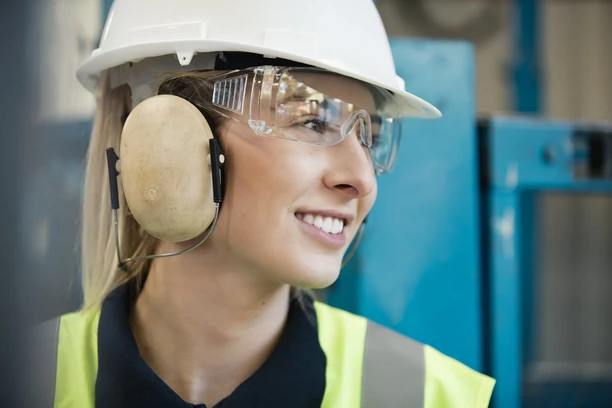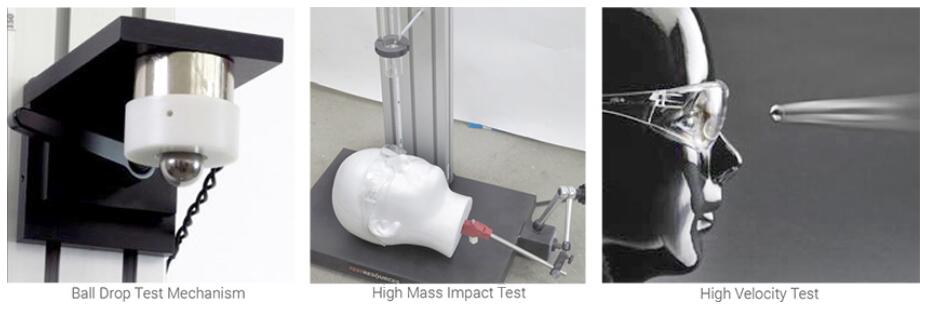- GlassesShop By FrameShop By StyleFeatured












Explore the key differences between Z87-1 and Z87+ rated eyewear, focusing on safety standards, usage, and protective features.
In the case of safety eyewear, it is essential to know the distinctions between various ratings to provide sufficient protection for different conditions. The two specifications of eyewear protection, known as the Z87-1 and Z87+, are standards set by the American National Standards Institute (ANSI). These differences must be considered in more detail.

The ANSI Z87 criteria are meant to ensure that protective eyewear offers adequate impact resistance for a variety of applications. These standards are mainly aimed at impact but also include other characteristics such as transparency, coverage, and life. The Z87 is a rating that belongs to the ANSI/ISEA Z87. The ADA has one standard that outlines guidelines for the protection of the eyes and face from harm in occupational and educational activities.
Safety eyewear with the Z87-1 label complies with the fundamental standards set by the ANSI Z87. 1 standard. This involves protection from flying objects, particles, and any other related risks in the workplace environment. The primary criterion for this rating is the Drop Ball Test, in which a one-inch steel ball is dropped from a 50-inch height. The eyewear must be able to survive this force without any part of the lens or the frame cracking or piercing.
● Impact Resistance: Protection against low-velocity impacts.
● Optical Clarity: It ensures that the lens does not render a distorted vision.
● Coverage: Sufficient coverage to shield the eyes from frontal threats.
● Fit: Good fit and stability to guarantee the appropriate levels of protection.
The Z87+ label means that the frame has undergone even more rigorous testing and offers a greater measure of protection than the Z87-1. In addition to the basic Drop Ball Test, Z87+-rated eyewear must pass two additional tests: the High Mass Impact Test and the High-Velocity Impact Test.

This test involves dropping a pointed weight of 500 grams from a height of 50 inches on the lens placed on a headform. The eyewear must stand this impact without any part of the frame or lens coming off or cracking. This test mimics shocks from larger and harder objects like tools.
This test involves firing an ¼ inch steel ball at the lens at speeds of up to 102 mph for Safety Glasses and up to 170 mph for Safety Goggles. The eyewear should safeguard the eye against penetration or impact by the ball or any other fast-moving object that can harm the eye.
Key features of Z87+ Eyewear
● Higher Impact Resistance: Increased resistance to both high mass as well as high velocity impacts.
● Durability: More overall lens and frame wear resistance.
● Additional Tests: The basic requirements of drop ball test, high mass, and high-velocity impact tests must be met.
● Extended Coverage: Sometimes, it offers more protection and extra elements, like side pieces that help shield the wearer from side dangers.
The improvement in the Z87+ rated eyewear means that the eyewear can now be used in areas that require higher levels of protection than usual. This includes construction industries, manufacturing industries, and any working environment where high-speed or high-mass impact hazards are likely to be encountered. The Z87+ rating implies higher protection levels and the ability to protect eyes against more dangerous conditions.
Choosing the right safety eyewear requires a clear understanding of the potential risks within a particular work environment. Low-impact hazards require z87-1-rated eyewear to provide adequate protection. However, for environments with higher impacts likely to occur, Z87+-rated eyewear should be used because of its higher protective capacity.
● For General Use: Z87-1 compatible eyewear is ideal for woodworking, light industry, and areas with low-velocity impact hazards.
● For High-Risk Environments: The Z87+ protective eyewear is specifically suited for construction sites, metal work, and other related areas where high mass and high-velocity impacts are likely.
Z87 is considered the basic standard, while Z87.1 is an enhanced version with stricter testing criteria, meaning Z87.1-certified eyewear offers greater protection against impact. A Z87.1 rating indicates a higher level of impact protection compared to the older Z87/Z87+ standard, where "Z87" represents a basic impact level and "Z87+" signifies a higher impact resistance; essentially, Z87.1 encompasses the requirements of both Z87 and Z87+ by providing a more comprehensive set of tests for impact protection across a wider range of hazards.
It is necessary to understand how to identify the correct safety glasses. Check for inscriptions on the lens or frame of the glasses. If you see “Z87,” it means the glasses only meet the minimum impact requirements. If you see “Z87+,” that means they meet even higher impact standards. These markings are generally minute and could be on the inside of the frame or lens.
Knowing the differences between Z87-1 and Z87+ ratings makes it easier to choose the right kind of eye protection for the task. Whereas Z87-1 only covers the essential impact resistance that may suffice in most work environments, Z87+ enhances those standards for higher-risk settings. As a rule, always evaluate the potential hazards in your environment and select the proper eyewear, which should at least correspond to the required security indicators.
Indeed, many safety glasses are manufactured to accommodate prescription spectacles. One tip is to search for the “OTG” (over-the-glass) design.
Replace them if they are scratched or damaged or if they have been subjected to very heavy usage. This way, you will be able to tell when it is time to replace the pair with a new one.
Some brands of safety glasses incorporate a UV protection feature into their design. They should have the “U6” label, as they can prevent up to 99% of germs from passing through—9 % of UV rays.
What Does the Z87 or Z87+ Marking On a Pair of Safety Glasses Mean? In simple terms, the Z87 or Z87+ markings on safety glasses mean that they've been put through rigorous testing to ensure they'll protect your eyes in the case of a projectile or other foreign matter striking your safety glasses.
The American National Standards Institute (ANSI) Z87+ safety rating indicates that safety glasses have passed a series of rigorous tests to protect the wearer's eyes from projectiles and other foreign matter. The plus sign (+) next to the Z87 marking indicates that the glasses meet a higher impact standard than Z87 glasses and have undergone additional tests.
Yes, Z87 glasses can be OSHA approved if they meet the American National Standard for Occupational and Educational Eye and Face Protection, ANSI Z87.1. OSHA's standard 29 CFR 1910.133(a)(6) requires that eye and face protection devices meet this standard.
No, Z87.1 and Z87+ are not the same, but they are both related to the ANSI Z87.1 standard for eye and face protection:
This standard ensures that safety equipment is made, tested, and labeled to protect against risks. Z87.1 eyewear is marked with a Z87 to indicate that it meets the basic impact rating certification.
This certification indicates that safety glasses meet or exceed the Z87 standard and have passed additional tests for high-velocity impact. Z87+ eyewear is marked with a “+” next to the Z87 or W marking on the sidearm or a W+ on the lens.
Safeguarding Your Sight: Unveiling the Vitality of ANSI Z87.1 Rated Eyewear

